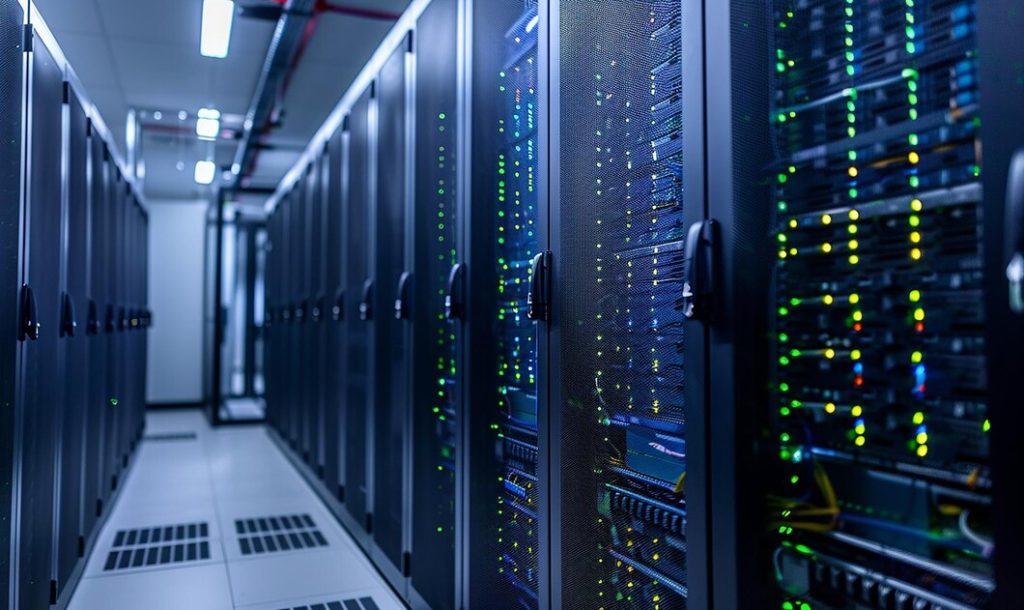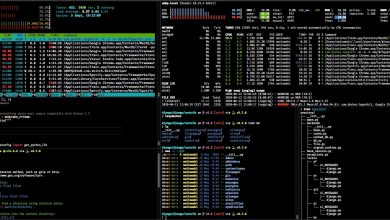What Is a Server?
The digital landscape is a vast and ever-expanding realm, where servers play a pivotal role in orchestrating the seamless flow of information, services, and applications. As aspiring IT professionals, understanding the concept of “What Is a Server?” is not merely essential; it is paramount to your success. This comprehensive guide will delve into the intricate world of servers, empowering you with the knowledge and insights necessary to navigate this complex field effectively.

What Is a Server?
In essence, a server is a specialized computer designed to host and manage shared resources, typically within a network. These resources can include files, applications, databases, and other services accessible by multiple client devices. Servers act as the backbone of the digital infrastructure, facilitating communication, data storage, and application execution.
Types of Servers
The realm of servers is a diverse one, each type tailored to specific functions and workloads. Some common server types include:
- File Servers: Centralized repositories for storing and sharing files
- Application Servers: Hosting and executing software applications
- Database Servers: Managing and querying databases
- Web Servers: Serving web pages and handling HTTP requests
- Mail Servers: Sending, receiving, and managing email
- Proxy Servers: Acting as an intermediary between clients and external networks
- Virtual Private Servers (VPS): Partitions of a physical server, offering dedicated resources
- Cloud Servers: Virtual servers hosted in a cloud computing environment
Server Architecture
Understanding server architecture is crucial for comprehending how servers operate. Servers typically consist of the following components:
- Hardware: Physical components such as processors, memory, storage, and network interfaces
- Operating System: The software that manages hardware resources and provides a platform for running applications
- Services: Software applications that perform specific tasks, such as managing files, serving web pages, or handling email
- Network: Connectivity to other devices and networks
Server Virtualization
Server virtualization is a technology that allows multiple virtual servers to run on a single physical server. This technique optimizes resource utilization, reduces hardware costs, and enhances flexibility.
Server Operating Systems
The choice of server operating system plays a critical role in server performance and functionality. Common server operating systems include:
- Windows Server
- Linux
- macOS Server
- Unix
Server Management
Effective server management is essential for maintaining optimal performance, ensuring security, and preventing downtime. Server management tasks include:
- Monitoring server performance and availability
- Installing and updating software
- Managing user accounts and permissions
- Backing up and restoring data
- Troubleshooting and resolving issues
Server Security
Server security is paramount in protecting data and preventing unauthorized access. Server security measures include:
- Firewalls
- Intrusion detection systems
- Antivirus software
- Access control lists
- Encryption
Server Monitoring
Server monitoring is the process of observing server performance, identifying potential issues, and ensuring continuous operation. Server monitoring tools can provide real-time insights into CPU utilization, memory usage, disk space, and network traffic.
Troubleshooting Server Issues
Troubleshooting server issues is a critical skill for aspiring IT professionals. Common server issues include:
- Hardware failures
- Software bugs
- Network connectivity problems
- Security breaches
- Performance bottlenecks
Server Maintenance
Regular server maintenance is essential for prolonging longevity and ensuring reliability. Server maintenance tasks include:
- Cleaning and inspecting hardware
- Updating software and security patches
- Replacing aging components
- Performing backups
Capacity Planning for Servers
Capacity planning is the process of forecasting future server resource requirements to prevent performance degradation and downtime. Capacity planning involves:
- Monitoring current server utilization
- Projecting future workloads
- Scaling server resources as needed
Disaster Recovery for Servers
Disaster recovery plans are essential for ensuring business continuity in the event of unforeseen disasters. Disaster recovery plans should include:
- Data backup and recovery procedures
- Server replication and failover mechanisms
- Redundant hardware and network infrastructure
Server Best Practices
Adhering to server best practices can significantly improve performance, security, and reliability. Server best practices include:
- Using appropriate hardware for the intended workload
- Optimizing server configuration settings
- Regular software updates and security patches
- Implementing redundancy for critical components
- Monitoring server performance and addressing issues promptly
The Future of Servers
The future of servers is inextricably linked to the evolution of technology. Emerging trends include:
- Cloud computing and serverless architectures
- Artificial intelligence and machine learning for server management
- Edge computing and distributed servers
- Quantum computing and its potential impact on server performance
Career Opportunities for Server Professionals
The demand for skilled server professionals is growing rapidly. Career opportunities in server management include:
- Server Administrator
- System Administrator
- Cloud Architect
- Network Engineer
- IT Manager
The Path to Becoming a Server Administrator
Becoming a server administrator requires a combination of technical skills, experience, and certifications. The typical path includes:
- Earning a degree or certification in computer science or IT
- Gaining practical experience through internships or entry-level roles
- Obtaining industry-recognized certifications such as CompTIA Server+ or Microsoft Server Administrator
Server-Centric Certifications
Server-centric certifications can validate expertise, enhance credibility, and open doors to career advancement opportunities. Common server certifications include:
- CompTIA Server+
- Microsoft Server Administrator
- VMware Certified Professional
- Red Hat Certified System Administrator
- AWS Certified Solutions Architect – Associate
FAQs about Servers
What are the main benefits of using servers?
Servers provide numerous benefits, including:
- Centralized data storage and management
- Increased security and privacy
- Improved performance and reliability
- Reduced hardware costs
- Scalability and flexibility
How can I choose the right server for my needs?
When choosing a server, consider factors such as:
- The type of application or service to be hosted
- The expected workload and performance requirements
- The number of users and devices to be supported
- The available budget
- Your technical expertise and support resources
What are the best practices for server maintenance?
Regular server maintenance is crucial for ensuring optimal performance and longevity. Best practices include:
- Monitoring server performance and addressing issues promptly
- Updating software and security patches regularly
- Backing up data regularly
- Cleaning hardware components regularly
- Replacing aging components as needed
What are the key security considerations for servers?
Server security is essential to protect data and prevent unauthorized access. Key security considerations include:
- Implementing firewalls and intrusion detection systems
- Using antivirus software
- Managing user accounts and permissions carefully
- Encrypting sensitive data
- Regularly auditing security logs
What are the emerging trends in server technology?
Emerging trends in server technology include:
- Cloud computing and serverless architectures
- Artificial intelligence and machine learning for server management
- Edge computing and distributed servers
- Quantum computing
Conclusion
Understanding “What Is a Server?” is a fundamental aspect of becoming a successful IT professional. This comprehensive guide has delved into the intricacies of servers, covering topics such as server types, architecture, virtualization, operating systems, management, security, monitoring, troubleshooting, maintenance, and best practices. With this knowledge and insights, aspiring IT professionals can confidently navigate the complex world of servers, maximizing their potential in this ever-evolving field.




